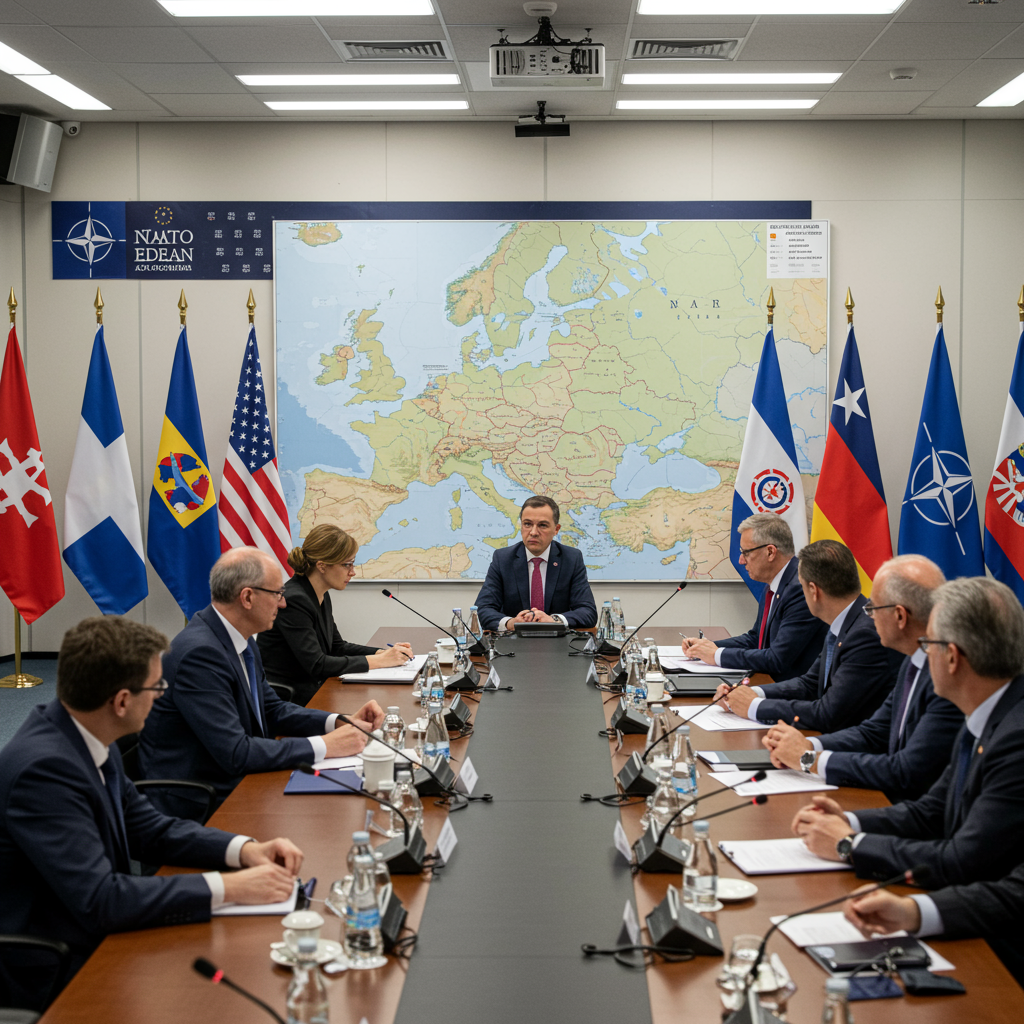Seventy-five years after its founding, the NATO alliance faces an evolving landscape, but its core purpose remains strikingly similar to the one described by its first head, Hastings “Pug” Ismay: to keep external threats out and crucial partners engaged. While the dynamics have shifted since the Cold War era – Germany is a vital ally, not one to be “kept down” – the imperative to counter Russian aggression and ensure the continued commitment of the United States is as pressing as ever.
As NATO’s 32 members prepare to gather, likely addressing critical defense priorities, a central theme dominates discussions: European nations must significantly increase their defense spending. This isn’t just about meeting arbitrary targets; it’s about securing the alliance’s future, bolstering deterrence, and signaling to Washington that Europe is serious about its own security.
The Urgent Need for a “Wartime Mindset”
Leading voices within the alliance are sounding the alarm. NATO Secretary General Mark Rutte has starkly warned that members need to adopt a “wartime mindset,” describing the current security situation as the gravest of his lifetime. He emphasizes that Russia is actively “preparing for long-term confrontation” and that European members are currently underprepared for the threats anticipated in the next four to five years.
Meeting the existing pledge to spend at least 2% of GDP on defense annually, agreed upon at the 2014 Wales Summit, is no longer considered sufficient. Rutte and others argue that “a lot more” is needed, urging allies to “turbocharge” their defense budgets. This call echoes the higher spending levels seen during the Cold War peak, when European members often allocated upwards of 3%, and some now suggest targets closer to 5% of GDP are necessary given the pace of global competitors.
The urgency is underscored by Russia’s economic posture, which is described as being on a “war footing.” By 2025, Russia’s defense spending is projected to consume a third of its state budget – the highest level since the Cold War – following its full-scale invasion of Ukraine and continued territorial gains. Failing to invest sufficiently now, as Rutte warns, means potentially paying a “much, much, much higher price later to fight” a conflict.
Ensuring America Stays “In”
A significant driver for increased European spending is the vital need to maintain the United States’ commitment to the transatlantic alliance. Uncertainty surrounding potential shifts in US foreign policy, particularly concerning previous administrations’ criticisms of European defense contributions and questioning of core mutual defense commitments like Article 5, has created palpable anxiety among allies.
While US military power, including nuclear capabilities and naval presence, remains indispensable for credible deterrence against adversaries like Russia, European allies are actively developing “burden shifting” plans. By increasing their own capabilities and contributions, they aim to assume greater responsibility for their defense, providing reassurance to Washington and reinforcing the value of the alliance. This strategic move also prepares them to potentially fill security gaps if the US were to reduce its military footprint in Europe.
Tangible Progress, Yet More to Achieve
Despite the challenges, NATO has made considerable progress in strengthening its defenses in recent years.
Increased Spending: By 2024, 23 of the 32 allies are projected to meet or exceed the 2% GDP target, with nations closer to Russia, like Poland (aiming for 5%), leading the way.
Enhanced Readiness: The alliance dramatically increased forces available on short notice, scaling up to a potential 500,000 troops under a new NATO Force Model.
Forward Deployment: The presence on the eastern flank has been bolstered with eight multinational battle groups maintaining a rotational presence.
Improved Planning: A new Defense Planning Process aligns resources with strategic needs to defend “every inch” of NATO territory.
- Large-Scale Exercises: Major drills like Steadfast Defender, involving 90,000 troops, demonstrate the alliance’s ability to repel attacks and project power.
- www.bbc.com
- www.voanews.com
- www.wilsoncenter.org
- fortune.com
However, significant gaps remain. The 2% target is still insufficient for current capability needs. There’s a critical requirement to expand the defense industrial base and move beyond simple interoperability towards “interchangeability” – where systems are functionally identical and shareable – to improve logistical flexibility and sustain operations.
A Call to Citizens
Increasing defense budgets will undoubtedly require difficult choices and potential cuts elsewhere, impacting areas like healthcare, migration, and cost of living – issues often higher on voters’ priorities. Recognizing this, the NATO Secretary General has made a direct plea to the citizens of member states, particularly in Europe and Canada. He urges the “one billion people living in Nato territory” to contact their politicians and advocate for defense to be prioritized. This is framed not just as a military necessity but as crucial for preserving their way of life, democracy, and values for future generations.
Ultimately, securing NATO’s future hinges on the collective will of its members to commit greater resources and effort. While the alliance has demonstrated resilience and made important strides, meeting the scale of the current threat posed by Russia and ensuring the sustained engagement of the United States requires European nations to accelerate their investment in defense. The price of preparedness, though high, is significantly lower than the cost of conflict.




